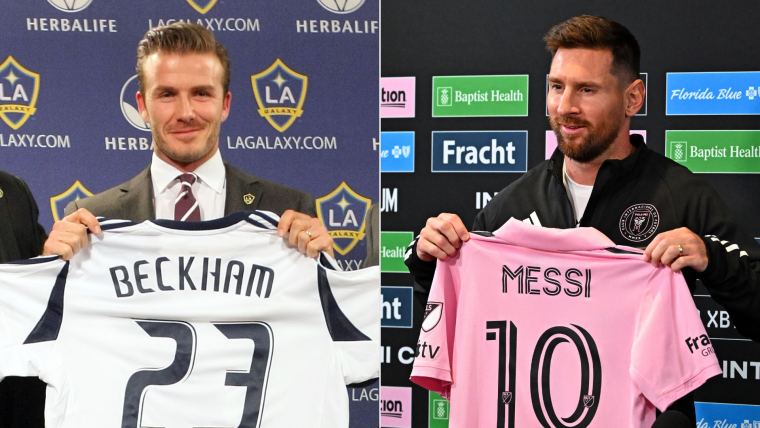The Unique Structure of Major League Soccer
In the United States, professional sports are structured differently compared to those in many other countries, and Major League Soccer (MLS) is a prime example of this distinction. Unlike many global leagues where clubs are independent entities that join a league and operate autonomously, MLS is a "single entity" organization. This means that all clubs in the league are essentially franchises, and the league itself has a stake in each club’s operations. This structure is designed to ensure financial stability and competitive balance across the league. Each club, therefore, operates as a part of the larger MLS enterprise, contributing to and benefiting from the league’s collective success.
The Designated Player Rule
One of the most significant and often discussed rules in MLS is the Designated Player (DP) rule. A Designated Player is an individual player whose annual salary exceeds the individual player salary limit, yet allows the club to remain within the overall salary cap. This rule was introduced to enable MLS clubs to attract and retain top global talent, which would otherwise be impossible due to the league’s strict salary cap. Each club can have up to three designated players, though they are not required to use all three slots. The rule gained prominence with the arrival of David Beckham to the LA Galaxy, a moment that marked a turning point in MLS’s efforts to become a major player in the international soccer market.
Notable Designated Players for the 2025 Season
The 2025 MLS season is set to feature some of the highest-paid designated players in the league’s history. Leading the pack is Lionel Messi, who has joined Inter Miami and is expected to earn a staggering $20,446,667 annually. Other notable DPs include Lorenzo Insigne of Toronto FC, earning $15,400,000, and Sergio Busquets, also of Inter Miami, with a salary of $8,774,996. These players, along with others like Federico Bernardeschi, Emil Forsberg, and Hany Mukhtar, bring significant star power and excitement to the league. The ability to sign such high-profile players without breaking the bank is a testament to the effectiveness of the DP rule in enhancing the league’s appeal and competitiveness.
MLS Roster and Salary Cap Rules
Major League Soccer operates under a hard salary cap, meaning that no club can pay their roster of players more than a combined $5,950,000 in 2025. This cap is an increase from the previous year’s $5,470,000. Additionally, no individual player can be paid more than $743,750, which includes both their salary and the transfer fee (amortized over the length of their contract). These restrictions are designed to promote financial stability and competitive balance, ensuring that no single club can dominate by spending excessively.
However, to compete in the global transfer market, MLS has implemented several roster mechanics. The most well-known is the DP rule, which allows clubs to pay designated players any salary without their entire compensation counting toward the salary cap. Instead, the player’s salary is capped at $743,750 for the purpose of cap compliance. Younger DPs under the age of 23 have an even lower cap hit of $200,000, and those 20 years old or younger count just $150,000 against the cap. This makes it easier for clubs to sign and develop young international talent.
Financial Constructs: GAM and TAM
In addition to the DP rule, MLS clubs can utilize other financial mechanisms to pay players over the individual maximum or exceed the full salary cap while remaining compliant. Two primary tools are General Allocation Money (GAM) and Targeted Allocation Money (TAM). GAM and TAM act like a form of league-provided currency, allowing teams to manage their finances more flexibly.
GAM is given to each club at the start of the season and can be used to buy down a player’s salary cap hit from over the individual maximum to the cap limit. For example, if a player’s salary is $1 million, a club can use $256,250 in GAM to make the player’s cap hit $743,750. GAM can also be traded between clubs and earned through performance-based achievements such as postseason qualification or success in the CONCACAF Champions League.
TAM, on the other hand, is distributed equally to all clubs and cannot be increased through trades or merit. It serves a similar purpose to GAM but is specifically targeted to help clubs sign high-value players without using a DP slot. However, TAM cannot be used to reduce the cap hit of a designated player, whereas GAM can. These financial constructs provide clubs with the flexibility to build competitive teams while adhering to the league’s financial regulations.
Roster Management: Limits and International Players
Every MLS active roster is limited to 30 players, with 20 of these being "senior players" whose salaries count against the annual salary cap. The remaining 10 spots are for "supplemental players," who do not count toward the cap. These supplemental players are typically younger, lower-salary players developed through the club’s academy or other developmental programs. This structure encourages clubs to invest in youth development and provides a pathway for young talent to break into professional soccer.
International roster spots are also a crucial aspect of roster management. In total, there are 241 international roster spots across the league, with each club starting the season with eight spots, though this number can vary due to trades. These spots are tradeable on a yearly basis, allowing clubs to manage their international player count. Players who obtain permanent residency in the United States and receive a green card no longer count as international players, freeing up an international roster spot. Additionally, clubs can sign up to three players under the U-22 initiative, who are 22 years old or younger and acquired from abroad. These players have a fixed cap hit of $200,000 (or $150,000 for those 20 years old or younger) and do not have their transfer fees counted toward the salary cap. This rule provides clubs with another avenue to bring in young, promising talent.
New Rule: Cash for Player Trades
Starting in 2025, MLS has introduced a new rule called "cash for player trades," which allows clubs to use unlimited out-of-pocket funds to trade for players. This rule adds another layer of flexibility to roster management. Previously, clubs could only trade using players, GAM, TAM, or international roster spots. Now, they can use cash, though there are limitations. Each club can acquire up to two players per season via cash and can also trade away up to two players per season using cash. Importantly, deals must be exclusively for cash or other assets, not a combination of both. If a player acquired via cash previously occupied a DP or U-22 initiative slot on their former team, they must continue to occupy the same slot on their new team’s roster for the duration of their contract. This rule is designed to enhance the trading landscape and provide clubs with more options to build their teams, while still maintaining the league’s financial balance and competitive integrity.











